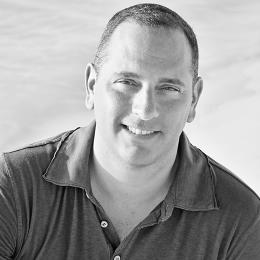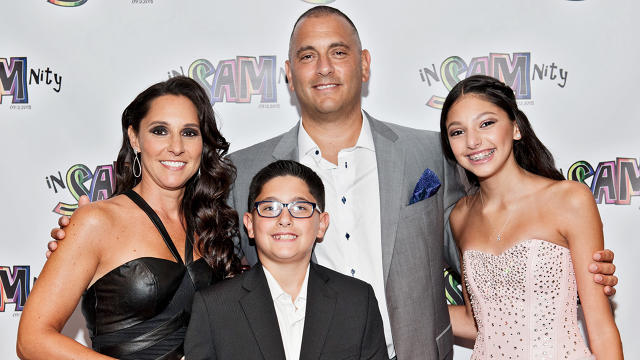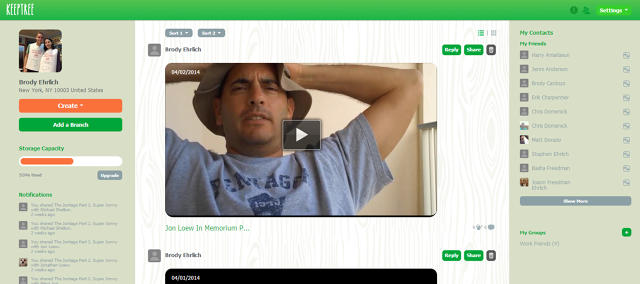Jon Loew was taking a shower on New Year’s Eve 2010 when all of a sudden he felt a sharp pain in his arm and pressure in his skull. The world suddenly looked distorted, its angles changed, “Like I was looking in the mirror at a funhouse,” he would later report.
He went downstairs. Guests began to arrive for a New Year’s Eve party. Loew grabbed a beer, tried to shake off his symptoms, and began to greet people. He attempted to keep his cool. All the while he was thinking, What the fuck is going on right now?

Days passed. The symptoms persisted, worsened. A neighbor pointed out that Loew was turning 40, an age when sudden, severe pains ought to be taken more seriously. Loew wondered if it was all just anxiety attacks, even though he had no history of them. Meanwhile, his ears had begun to ring, the pressure in his head had grown worse, and he now had trouble keeping his balance.
At the hospital, scans of his brain and carotid artery checked out fine. A specialist ruled out anything that might be wrong with his sinuses. But when Loew went home, the symptoms multiplied. His muscles began to cramp easily, his arms and hands went numb. There was an excruciating pain in the base of his skull, and a dull and constant ringing in his ears. One day, as he was pumping gas, someone yelled at him, “Yo!” Gas was spurting from his car onto his feet. He hadn’t heard or felt it.
He stopped eating. He forgot his mother’s name. When he lay down in bed at night, his skin felt like it was on fire. And to make it all worse, he couldn’t sleep.
The doctors said they didn’t know what was wrong with him. The long-term sleep deprivation and malnourishment visibly worried them. They called him at night to check up on him. “I said to my wife, ‘Oh, shit. No one ever called to check up on me before . . .’” recalled Loew.
When he reported to his doctors that he was only getting 15 minutes of sleep per night, they asked why he wasn’t taking his Valium and Ambien.
“I am,” he insisted.
“Then you should be asleep,” they said. “This is impossible.” And yet, it was really happening.
Loew began to feel that he could die, literally, at any second. But through all of this, his chief concern wasn’t himself, but his children, who were 5 and 8. What agonized Loew most about death was everything he might miss with his children. He had planned to be with them through decades, offering guidance, imparting advice. The thought of missing all that was an agony on par with his physical suffering.
So one day he sat down in front of a camera and pressed record.
“Hi, Sammy and Coby, it’s Daddy,” he began. He bit his finger. “Uh . . . it’s 2011,” he added.
He went on to explain that “sometimes you’re faced with things you think you’re not gonna be able to fix,” but told them a trick that worked for him: to write down previous things he’d thought were insurmountable, but somehow surmounted.
“Right now, I’m actually going through something that has been very hard,” he said. “The most important advice I can give you is to remember that nothing is ever as bad as it seems.”
He concluded: “One of the things that helps me is to think about you guys and Mommy. I love you both and I hope you watch this at times that you need a little pick-me-up, because, believe it or not, everything will be okay.”
He smiled and turned off the camera.
Over a period of 10 days, Loew recorded 15 such videos, each just a few minutes long—all he felt capable of.
He left his wife instructions to share the videos with their children over the years, after he died.
A few weeks into his ordeal, Loew decided to tackle his illness with the same skill set he had used in his career as a businessman. “I decided I was going to treat this like a business, like a project I was going to win,” he would say. He kept detailed and impeccably organized medical records, building a filing system with multiple copies of all the most important documents. He contacted two people whose opinions he admired most, and the recommendation came back: go to the Cleveland Clinic.
At the Cleveland Clinic, Loew encountered a level of efficiency and professionalism that he had only seen before on military bases. He met with the top doctors of every relevant department. “Are you a stunt man?” one asked. (There seemed to be no other explanation for why his whole body was in pain.) Another doctor seemed bent on the theory that Loew was a spy or special operations soldier suffering from PTSD.
“I’m just a fuckin’ dude from Long Island, man,” Loew insisted.
Finally, the doctors arrived at a diagnosis: fibromyalgia.
The doctors told him they didn’t know what caused it, and that it didn’t really matter. What happened, they said, is that his body had somehow reached a threshold of pain that was so bad that his whole body had gone into chronic fight-or-flight mode. His nervous system had gone haywire.
Then they said the magic words: “We can help you get your life back.”
It wasn’t going to be an easy road, and not all patients improved from fibromyalgia. But the doctors said that if Loew took certain medications, regulated his diet, rested properly, and exercised, he stood a good chance of managing his symptoms. He flew home, reading an entire book about the condition on his flight.
He went home, lay on the couch, rested for a few minutes, then immediately got up. “What are you doing?” his wife asked.
“I’m going for a walk around the block,” he said.
The simple walk fatigued him as though he were running a marathon. But the next day, he walked a bit more, and the next day, a bit more. He began to take the medication he was prescribed. And about a week in, he finally slept for a little over two hours.
“I never felt so good in my life,” he recalls now.
The next night, he slept three hours. The night after that, four, the night after that, five. Soon enough, he was sleeping eight hours a night.
He was getting better.

As Loew got better, he thought about those videos he had saved for his children. Now, thankfully, it was looking like he could relay many of those life lessons personally. But back when the future looked glum, those videos had been a kind of psychological life raft.
Loew began to wonder why there wasn’t a product that automated some of the functionality he had worked out with his wife: a product that recorded, saved, and delivered videos at some future appointed date. He mentioned it to a few colleagues and business associates, one of whom broke down in tears (her father had recently died). One of his partners thought the idea represented a viable business, and quickly raised money.


The result is KeepTree, now about four years old. It has so far received $5 million in funding; its 30,000 users have uploaded 50,000 videos. Its distinguishing patented feature is a tool called “FutureSend,” which allows users to set a date for a video to be sent to its audience. “Whether it is 30 days or 30 years from now, your video will be delivered,” the company’s website promises. (How any company can predict what the future holds 30 years from now is a question KeepTree doesn’t quite answer. The claim is somewhat plausible, because its videos are stored on an ultra-secure network used by the U.S. government, and because the company has set aside a reserve of capital to finance storage and delivery even in the event of KeepTree’s demise.)
A white-label version of KeepTree is offered to U.S. servicemen and -women abroad, for free. “TroopTree” also records, stores, and delivers videos on behalf of people in the Armed Forces. Since a soldier may only have a few precious days of internet access on a base before going on a remote and dangerous assignment, TroopTree offers a way to log many videos, the delivery of which can be staggered as desired. Another related business, Vift, sends recipients video gift messages when physical gifts are ordered from online retailers.
Overall, Loew finds that his medical nightmare has totally restructured the way that he thinks about time, how it flows, and how to use it. The “Long Island dude” has become the sort of person who quotes the Bhagavad Gita, casually uttering things like, “After you have a child, time becomes three-dimensional.” He has calculated the remaining years he hopes to have ahead of him, and has asked hard questions about how he wants to use them, and who he wants to spend them with. An aura of Zen has come over him, as has an intense focus on his family and the work he cares about.
“I have no fear of anything anymore,” he says. “I’m not afraid of ISIS, tornadoes, or sharks, or anything. Nothing can be done to me that wasn’t done in that 60-day period.”
Fast Company , Read Full Story
(22)